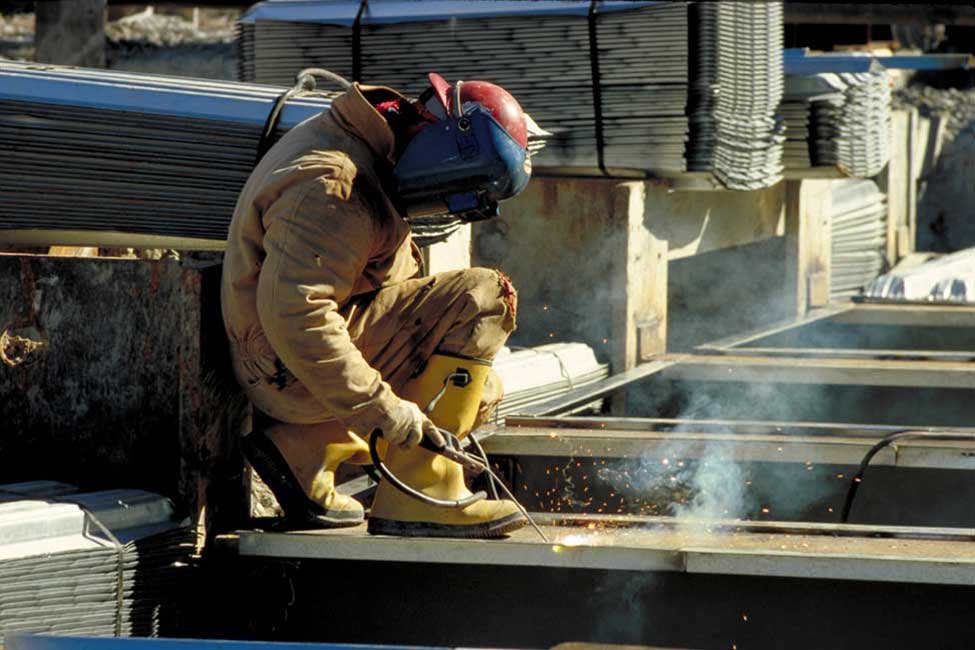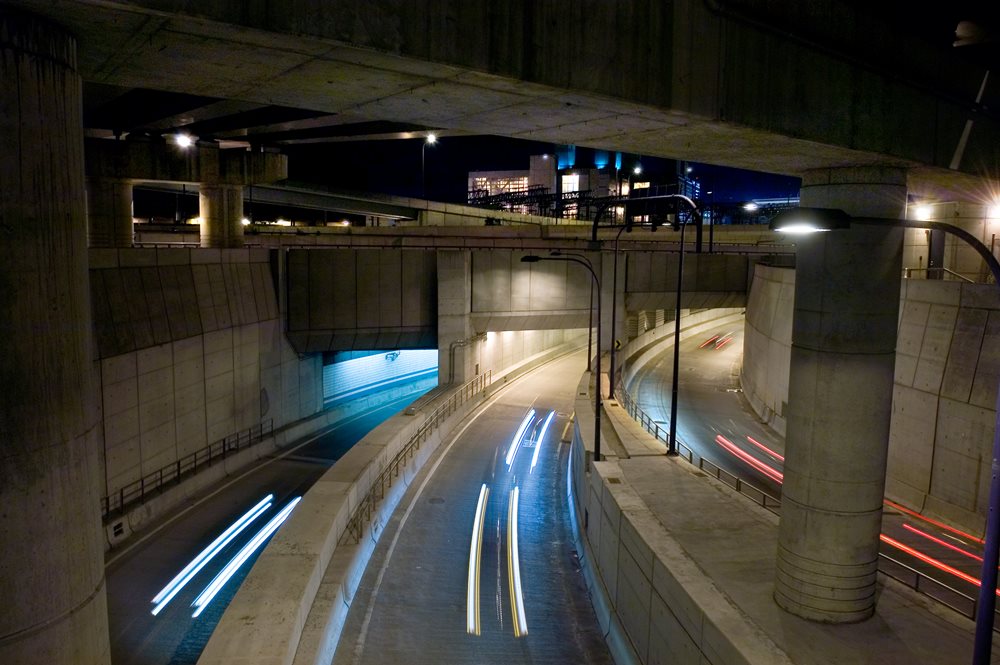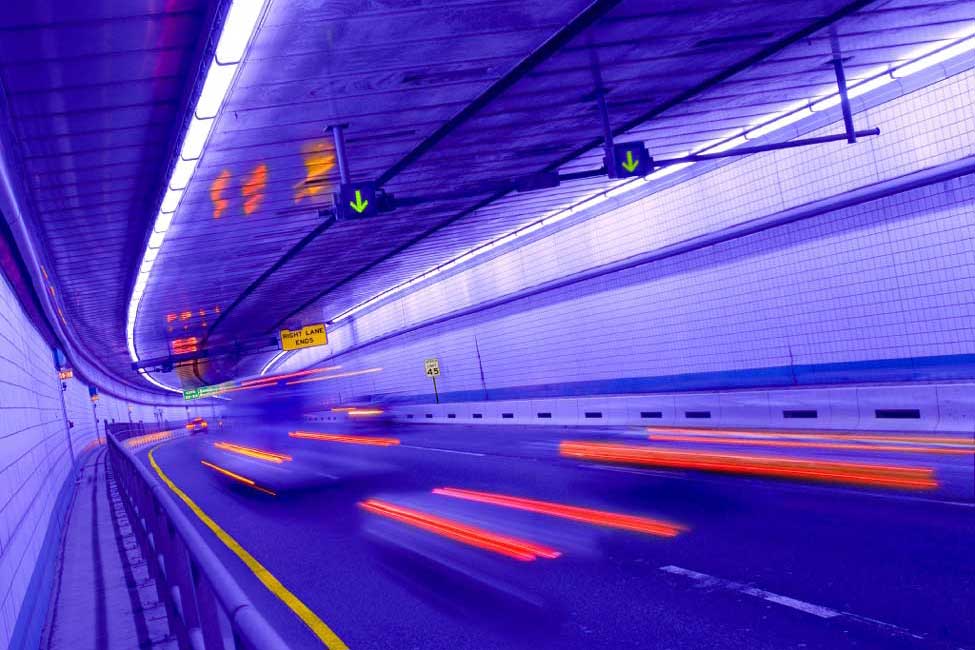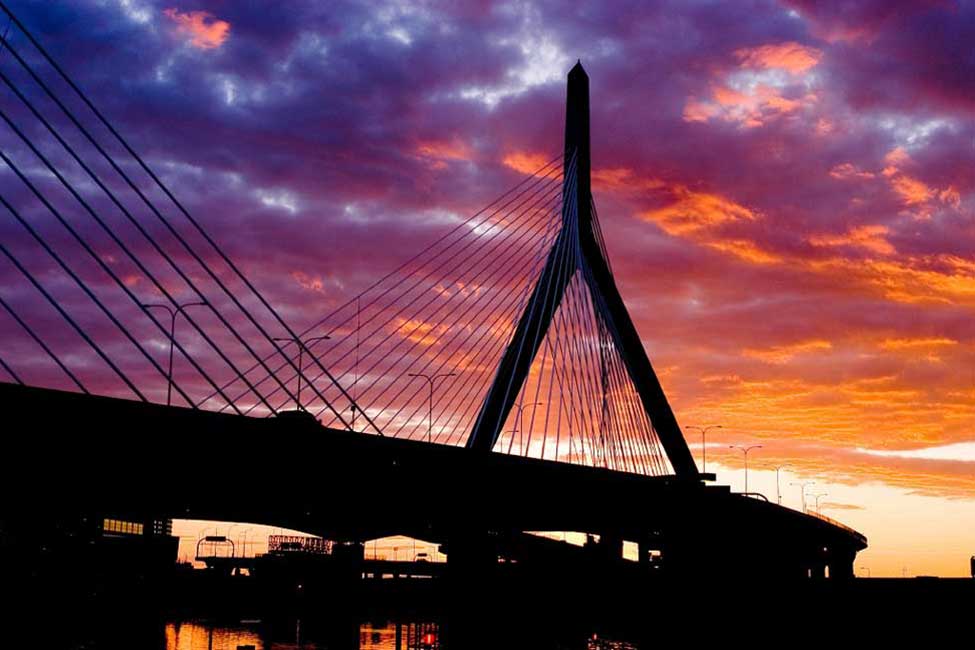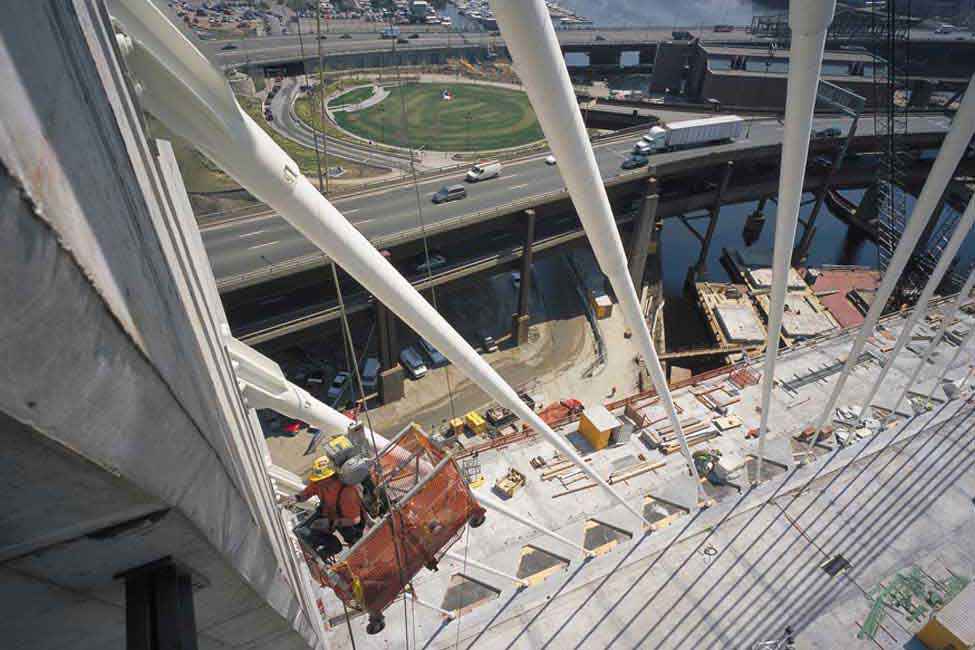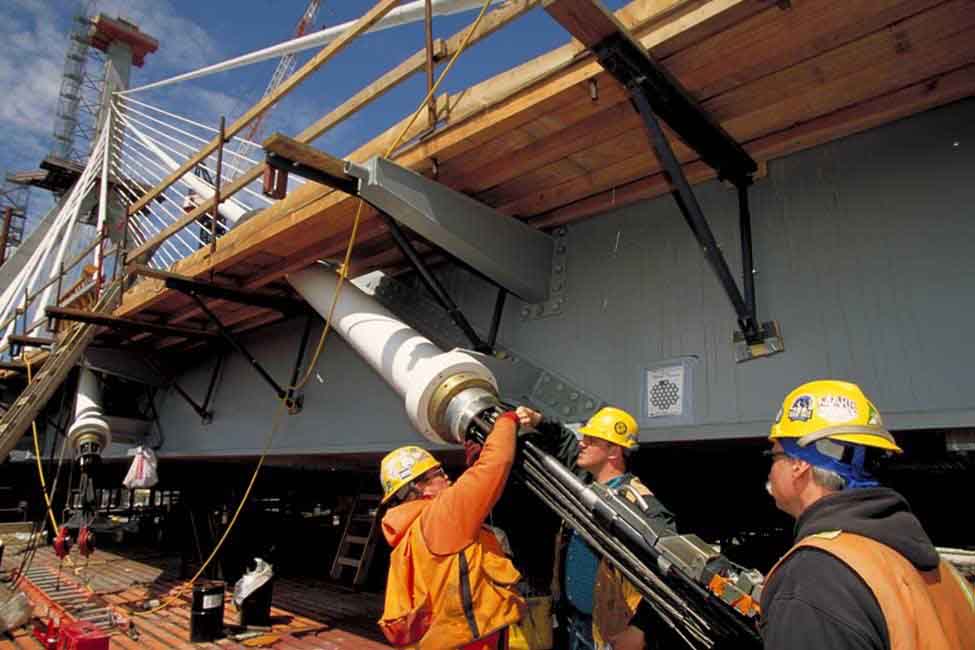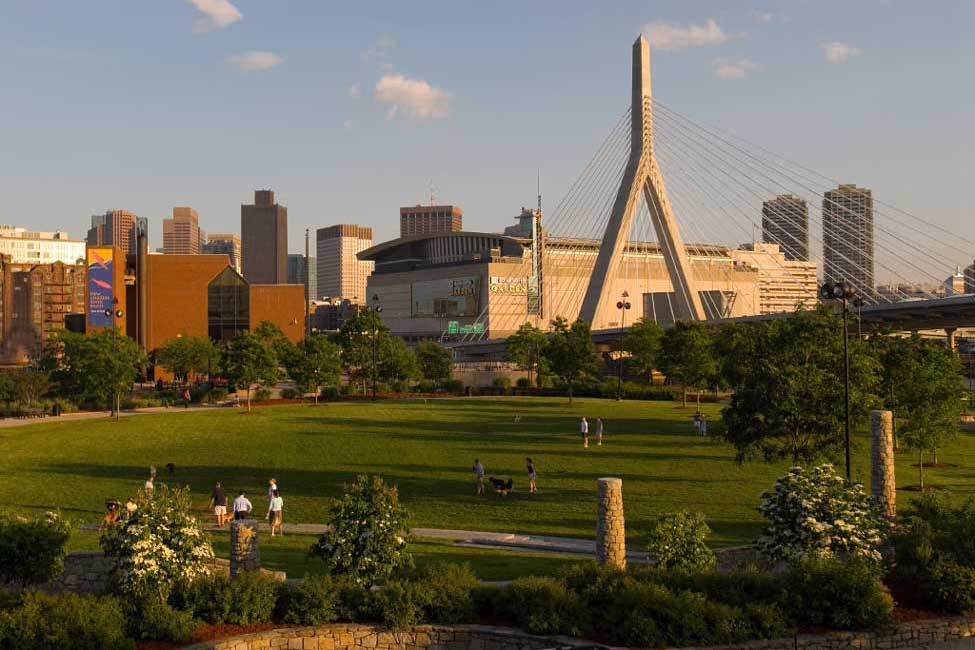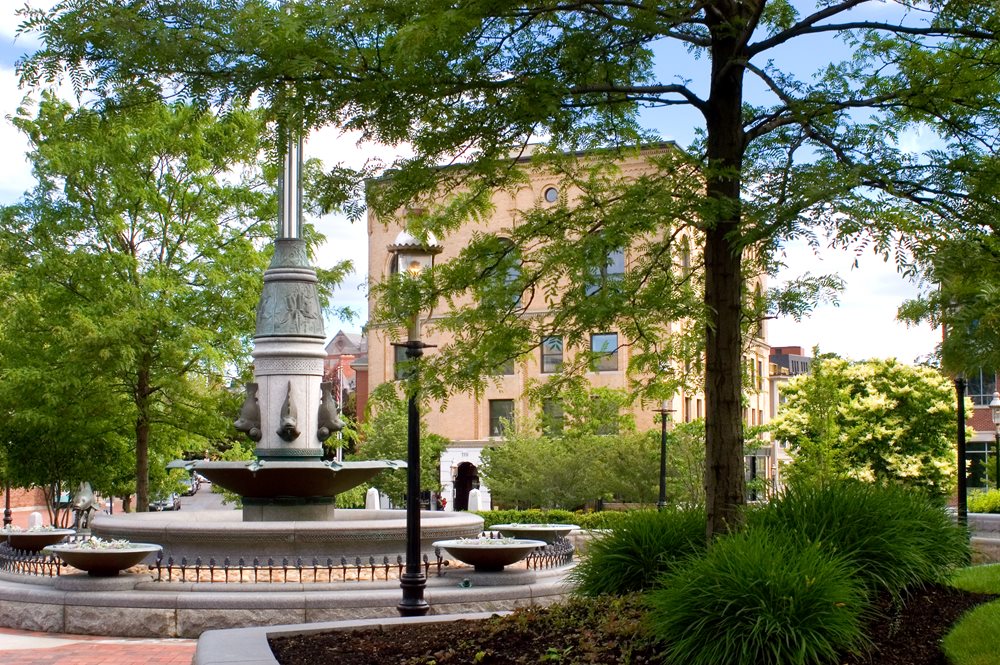Decades after its completion, the Boston Central Artery Tunnel (CA/T) project, commonly referred to as the Big Dig, remains one of the largest and most complex infrastructure projects in the history of the United States – a remarkable achievement that has contributed to Boston’s economic vitality and made communities in and around the city more connected and prosperous.
The public works project is on a scale comparable to some of the greatest projects of the previous century like the Hoover Dam and the Channel Tunnel connecting France and the UK. The project received dozens of awards for engineering excellence and aesthetics, as well as the positive impacts it has had in the Boston area. Specifically, the Outstanding Civil Engineering Achievement Award from the American Society of Civil Engineers (ASCE) in 1996 for the Ted Williams Tunnel and in 2004 for the innovative and visually stunning Leonard P. Zakim Bunker Hill Bridge, a crown jewel of Boston's Central Artery/Tunnel project.
The project was the result of more than 30 years of planning and 12 years of construction. The Central Artery/Tunnel project replaced the elevated section of Interstate 93 Central Artery through downtown Boston with a much wider underground highway and extended the Interstate 90 turnpike to Logan International Airport via a third harbor tunnel. Bechtel and its joint-venture partner, Parsons Brinckerhoff, provided overall program management for the project.
The project significantly reduced traffic congestion and improved mobility in one of America's oldest and most congested major cities. In addition, it helped improve the environment, and established the groundwork for continued economic growth for Massachusetts and New England.
Since the project’s completion in 2006, the new roadways have made a lasting impact to the Boston community. The project opened new possibilities for urban development, reconnected neighborhoods, and revitalized previously neglected areas. Today, Bostonians enjoy the Rose Kennedy Greenway, a vibrant linear park and most importantly, improved connectivity thanks to the roadways in place. Learn more about The Greenway here.
We are grateful to have played a role in one of the largest and most complex infrastructure projects in the history of the United States. Bechtel is proud of the thousands of dedicated and talented men and women from Boston and beyond who worked on this vast project, a remarkable achievement.
As America embarks on a new era of infrastructure investment, the hard-earned lessons of the Big Dig will continue to support the success of future urban infrastructure megaprojects.
Engineering firsts
The Boston Central Artery/Tunnel project entailed building state-of-the-art freeway segments only inches above 19th-Century public transit railways. Other efforts that expanded civil engineering boundaries included:
- Building the world's widest cable-stayed bridge
- Creating the deepest underwater connection in North America
- Executing an unprecedented ground-freezing program to stabilize Boston's soils during construction and to stabilize historic structures.
By the numbers
- 7.8 miles (12.6 kilometers) of highway made up of 161 lane-miles (nearly 260 lane-kilometers), about half in tunnels, built.
- More than 16 million yards (12.2 million cubic meters) of soil excavated.
- 3.8 million cubic yards (12.2 million cubic meters) of concrete placed.
- More than 300 acres of new parks and open space created.
- Seven-building ventilation system for the tunnels—one of the largest such system in the world.
- 62 percent decrease of total vehicle-hours of travel on the project's highways between 1995 and 2003,
- Approximately $168 million saved by travelers annually due to shorter travel times and lower transportation costs, based on improvements made in 1995-2003.
- 74 percent decrease in peak period travel times from the I-90/I-93 interchange to Logan International airport.
- 12 percent drop in carbon monoxide levels citywide because the new highway system keeps traffic moving, reducing emissions significantly.
Keeping the city open during construction
Completing this project in the middle of Boston without crippling the city was an incredible challenge—one that our Bechtel team lives for. Boston had a world-class traffic problem. The elevated six-lane highway called the Central Artery, which ran through the center of downtown, was carrying upwards of 200,000 vehicles a day by the early 1990s, making it one of the most congested highways in the United States. Traffic crawled for more than 10 hours each day and the accident rate on the deteriorating elevated highway was four times the national average for urban interstates. The same problem plagued the two tunnels under Boston Harbor between downtown Boston and East Boston/Logan Airport.
Work of this magnitude and project duration had never been attempted in the heart of an urban area. To keep it on track, Bechtel project planners worked with environmental and other oversight and permitting agencies, community groups, businesses, and political leaders to create consensus on how the project would be built.
Creating workforce opportunities
At its peak, the Boston Central Artery Tunnel project employed more than 5,000 workers in a range of construction jobs, all earning a salary and improving their skills. This was part of the project’s social value for Bostonians, beyond the obvious practical element of gaining new highways.
Thousands of dedicated and talented men and women from Boston and beyond worked on this vast project, as well as the hundreds of contractors and small businesses. The project attracted $7 billion in private investment, adding more than 43,000 jobs along the I-93 corridor and in the South Boston Seaport District, 7,700 new housing units with 1,000 affordable housing units, 10 million square feet of office and retail space, and 2,600 hotel rooms.
Reconnecting neighborhoods and communities through revitalized infrastructure
Before the new Central Artery Tunnel was built, Boston’s previous elevated highway (which displaced 20,000 residents when it was built) caused traffic issues and cut off Boston's North End and Waterfront neighborhoods from downtown, limiting these areas' ability to participate in the city's economic life. As part of our work on the Central Artery Tunnel, we reconnected these neighborhoods, improving the quality of life in the city beyond the limited confines of the new expressway.
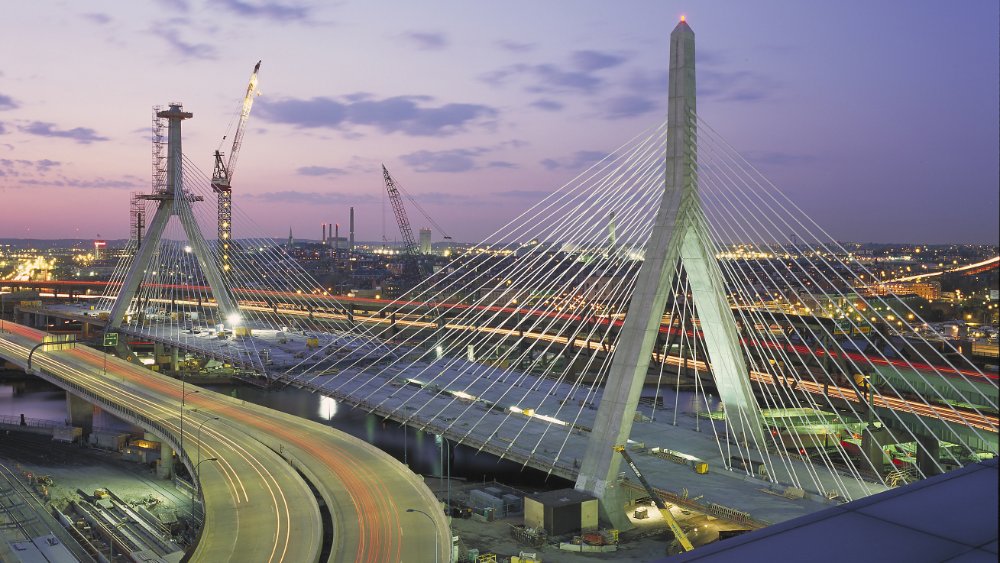
A Boston monument
The 10-lane cable-stayed hybrid bridge is the widest ever built and the first with an asymmetrical design. Designed by Swiss bridge specialist Christian Menn, the willowy bridge ties cables from the roadbed directly to the support towers. Atlanta and other cities have requested similar designs.
The bridge carries two outer lanes cantilevered on its east side. An additional eight lanes pass through the legs of the twin 300-foot (91-meter), obelisk-topped, inverted Y towers that echo the nearby Bunker Hill Monument. The bridge's cables―which suggest a ship in full sail ―also evoke the history of East Boston as a center of shipbuilding. The bridge picks up Interstate 93 traffic as it emerges from the new Central Artery tunnel and carries it across the Charles River to point north.


